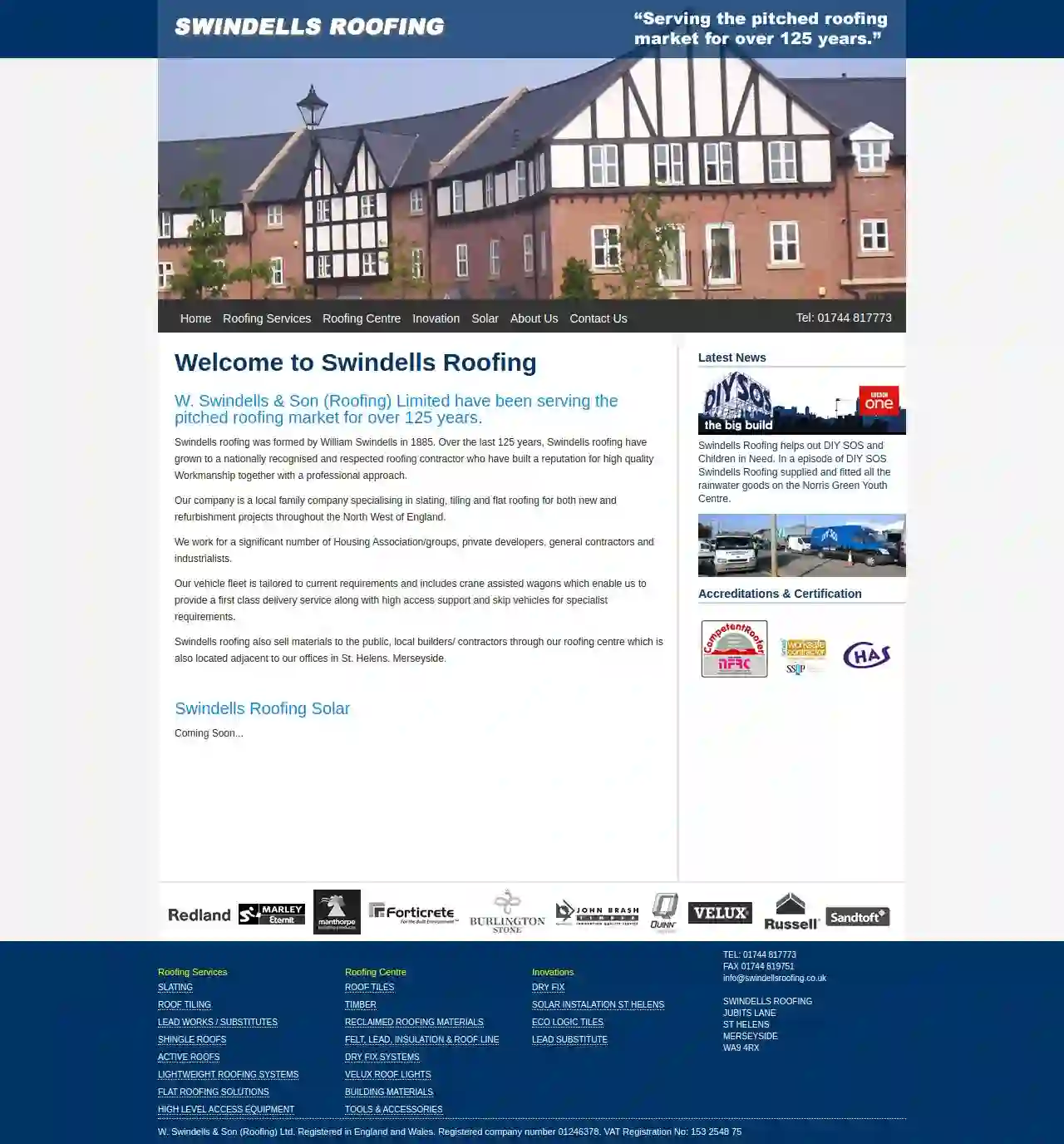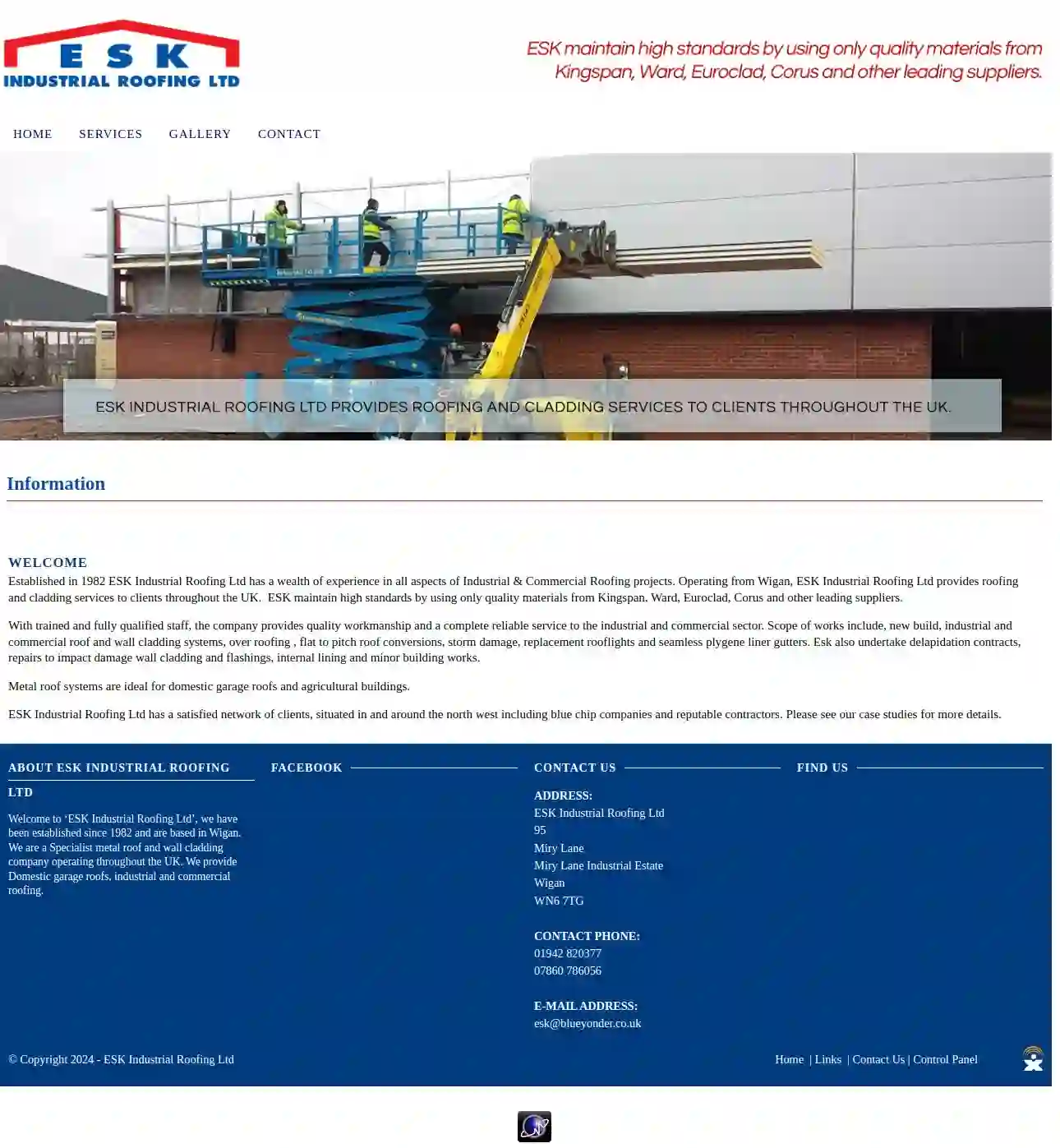Roofing Companies Culcheth
Find top Roofers in Culcheth
Receive 3 FREE Roofers quotes for your project today! Compare profiles, reviews, accreditations, portfolio, etc... and choose the best deal.

D & P Roofing And Building
51 reviews182, park road, Westhoughton, BL5 3HB, GBD & P Roofing and Building are trusted builders and roofers in Worsley with over 30 years of experience. We offer a wide range of services, including roofing, building, extensions, exterior decorating, wall removal, paving, and project management. We pride ourselves on providing high-quality workmanship, competitive prices, and excellent customer service. All our work is fully guaranteed, and we offer free estimates. Whether you're looking for a small repair or a large-scale project, we can help. We cover Worsley and all surrounding areas.
- Services
- Why Us?
- Testimonials
- Gallery
Get Quote
Swindells Roofing
3.332 reviewsSutton Manor, St Helens, Jubits Lane, WA9 4RX, GBW. Swindells & Son (Roofing) Limited have been serving the pitched roofing market for over 125 years. Swindells roofing was formed by William Swindells in 1885. Over the last 125 years, Swindells roofing have grown to a nationally recognised and respected roofing contractor who have built a reputation for high quality workmanship together with a professional approach. Our company is a local family company specialising in slating, tiling and flat roofing for both new and refurbishment projects throughout the North West of England. We work for a significant number of Housing Association/groups, private developers, general contractors and industrialists. Our vehicle fleet is tailored to current requirements and includes crane assisted wagons which enable us to provide a first class delivery service along with high access support and skip vehicles for specialist requirements. Swindells roofing also sell materials to the public, local builders/contractors through our roofing centre which is also located adjacent to our offices in St. Helens, Merseyside.
- Services
- Why Us?
- Accreditations
- Gallery
Get Quote
D Batty Roofing Services
GBD Batty Roofing Specialists is your trusted source for quality and reliable roofing services in Wigan. With over 20 years of experience in the industry, we have built a reputation for excellence and professionalism that you can count on. Our uniquely skilled team of roofers is dedicated to providing you with exceptional service in all aspects of roofing work, from roof tiling and leadwork to emergency roofing and moss removal. As your local roofing specialists, we prioritise customer satisfaction and strive to exceed your expectations with every project. We believe in transparency. That's why we offer all our clients a free, no-obligation quote. Contact us today to request a callback, and we will get back to you promptly. Our services are second to none. Our team comprises skilled roofers, delivering workmanship that speaks for itself. We can help you with all your roofing needs, including but not limited to: New Roofs : Our professional team installs fresh and sturdy roofing systems using quality materials and expert craftsmanship. We ensure a reliable and weather-resistant covering for your building, offering enhanced protection and an aesthetically pleasing finish. Roof Repairs : Whether it's a minor fix or a significant overhaul, you can trust us for efficient and cost-effective roof repairs. We are well-equipped and experienced in restoring and maintaining the integrity of your existing roof. Guttering Services : Our guttering services encompass the installation, repair, and maintenance of gutters and downpipes on buildings. Our comprehensive guttering solutions help manage rainwater effectively, preventing water damage to the structure, foundation, and landscaping. Why Choose Us? Experience The D Batty Difference Professional Service Your Partners In Excellence View Our Services First-Class Solutions Exceeding Your Expectations Discuss Your Project Highest Standards Offering Premium-Quality Services
- Services
- Why Us?
- Gallery
Get Quote
Roofcare Company
52 reviewsGBThe Roof Care Company is a fully-certified professional roofing company based in Southampton, Hampshire. We are dedicated to providing high-quality roofing services for both residential and commercial clients. From complex large-scale projects to small repairs, we tackle every job with the same commitment to excellence. We understand that your home or business is a significant investment, and we strive to protect it from the unpredictable British weather. Our team is experienced in all aspects of roofing, including new roofs, flat roofing, repairs, moss removal, fascias, and guttering. We offer a 35-year warranty on rubber roofs and provide written quotations with no hidden costs. We pride ourselves on clear communication, staying in touch with our clients throughout the entire process. Our phone is available 24/7 for any urgent matters. We guarantee excellent workmanship and customer satisfaction.
- Services
- Why Us?
- Gallery
Get Quote
Shawcross D Ltd
244 Warrington Road, Abram, WN2 5RQ, GBD Shawcross Ltd has been providing quality roofing services since 1978. Our name has become associated with excellent work and we are recognised as one of the leading roofing contractors and roofing repair specialists in the north of England. With over 40 Years Experience We are experienced in all types of roofing work from large corporate contracts with local authorities, Government agencies, schools and colleges, NHS Trusts and private companies to simple domestic roofing repairs. We have a continuous training programme for all our staff covering everything from Health and Safety to the very latest roofing techniques. We can also help you with the design of your roof, offering various specifications from our technical staff. We can help you with your roofing needs – whatever the size, whatever the job, budget and keep your project within the bounds of building regulations with the highest quality of work combined with competitive pricing and friendly, professional, qualified staff. Call us today, whatever your roofing problem may be, we can provide a roofing solution.
- Services
- Why Us?
- Gallery
Get Quote
E S K Industrial Roofing Ltd
53 reviews95 Miry Lane, Miry Lane Industrial Estate, Wigan, WN6 7TG, GBWELCOME Established in 1982 ESK Industrial Roofing Ltd has a wealth of experience in all aspects of Industrial & Commercial Roofing projects. Operating from Wigan, ESK Industrial Roofing Ltd provides roofing and cladding services to clients throughout the UK. ESK maintain high standards by using only quality materials from Kingspan, Ward, Euroclad, Corus and other leading suppliers. With trained and fully qualified staff, the company provides quality workmanship and a complete reliable service to the industrial and commercial sector. Scope of works include, new build, industrial and commercial roof and wall cladding systems, over roofing , flat to pitch roof conversions, storm damage, replacement rooflights and seamless plygene liner gutters. Esk also undertake delapidation contracts, repairs to impact damage wall cladding and flashings, internal lining and minor building works. Metal roof systems are ideal for domestic garage roofs and agricultural buildings. ESK Industrial Roofing Ltd has a satisfied network of clients, situated in and around the north west including blue chip companies and reputable contractors. Please see our case studies for more details.
- Services
- Why Us?
- Gallery
Get Quote
MC&R Roof & Property Services
4.847 reviews185 Segensworth Road, Fareham, PO15 5EH, GBMC&R Roof and Property Services provide domestic and commercial clients with roof repairs and roofing restoration services throughout Hampshire. Our Fareham based contractors are professional roofers you can rely on. Specialists in Slate, lead, tile, felt, waterproofing and flat roof repair. We also offer chimney stack pointing and Velux window installation.
- Services
- Why Us?
- Gallery
Get Quote
GC and Son's Roofing Eastleigh
GBWelcome, at GC & Sons we can provide you with an expert roofing and building service tailored to suit your exact requirements. We are specialists in all types of roofing & building work and are your one-stop company for any roofing or building work you need completing. We always take the time to understand our clients needs and will explain to you in detail the process and duration of any work we carry out for you. We make sure all work is initiated on time and proceeds with the minimal disruption to our client's lives. Based in Yately, we cover a radius of 50 miles beyond it. Choose Us For Free Quotes Experience Value Committed, Professional Service High Quality Materials Fully Insured Highly Experienced Workforce Customers References Available Areas Covered Yately Guildford Woking Newbury Maidenhead Slough Bracknell Leatherhead Farnborough Farnham Basingstoke And all surrounding areas. Services Offered Roofing Chimneys Painting & Decorating UPVC Roofline Loft Conversions Conservatories Building Work All Services Available All new roofs - slating, tiling, tile hanging. All roofing repairs & high pressure cleaning. GRP Fibre Glass Roofs. Chimney repair, re-pointed, rebuilt. Ridge tiles rebedded, re-pointed, rebuilt. Valleys renewed and repaired. Load work and flashing. Loft conversions. Load work and flashing. Conservatories and porches. UVPC guttering, cladding, soffits and facias Roof coating and sealing Internal & external painting & decorating. We aim to make sure all our customers are fully satisfied with the work we carry out. We give customers full value for money by providing a reliable service which carries out our services professionally and to the required standard with a minimum of fuss and disruption to the client.
- Services
- Why Us?
- Accreditations
- Our Team
- Testimonials
- Gallery
Get Quote
COLLINS ROOFING
4.956 reviews19 Portreath Way, Windle, WA10 6EH, GBCertified Roofing specialists in St Helens, Warrington and the surrounding areas. As members of the Confederation of Roofing Contractors and Trading Standards Approved you can keep your roof well maintained with Collins Roofing. From roof repairs to a new roof installation, we provide it all at a competitive price. Collins Roofing is a family run business with almost 50 years of trading experience. Collins Roofing have an excellent reputation throughout the North West region and a major part of our business comes through recommendations. Our philosophy is simple - to provide the same quality service to your family as we would to our own. We are happy to provide professional roofing advice and free quotations. Contact us today for assistance. Do you have a damaged roof? We can fix it for you. From roof repairs to new roof installations, we provide a full range of roofing services. We are also available for emergency call outs.
- Services
- Why Us?
- Accreditations
- Our Team
- Testimonials
- Gallery
Get Quote
St Helens Roofing
3.54 reviewsGBSt Helens Roofing is one of the largest roofing companies in St Helens, covering the North West and surrounding areas. With over 25 years of experience in the roofing industry, they have established themselves as one of the best roofing companies in the area. They provide a wide range of quality roofing services, including conservatory roof conversions. Their team of highly skilled roofers and conservatory roof converters are ready to help customers. The company's success comes from developing strong relationships with customers and suppliers, allowing them to provide quality roofs every time. When you choose St Helens Roofing, they will arrange a free no-obligation appointment with a professional roofing expert. They will discuss your project and how their process works before measuring up your property.
- Services
- Why Us?
- Gallery
Get Quote
Over 12,314+ Roofing Businesses in our network
Our roofing contractors operate in Culcheth and surrounding areas!
Roofyng.co.uk has curated and vetted Top Roofers in and around Culcheth. Find a trustworthy contractor today.
Frequently Asked Questions About Roofing Companies
- Safety First: Avoid going onto the roof during a storm, as it's dangerous.
- Document the Damage: Take photos and videos of the damage for insurance purposes.
- Contact Your Insurance Company: Report the damage to your insurance company as soon as possible to initiate a claim.
- Temporary Repairs: If safe, address any immediate leaks using buckets or tarps to minimize further damage.
- Contact a Roofing Contractor: After the storm, have a qualified roofing contractor inspect the roof and provide a repair estimate.
- Choose Reflective Roofing Materials: Opt for light-colored shingles or metal roofing that reflects sunlight and reduces heat absorption.
- Install Proper Attic Insulation: Adequate insulation prevents heat loss in the winter and heat gain in the summer.
- Ensure Adequate Ventilation: Proper attic ventilation allows hot air to escape, reducing cooling costs and extending the lifespan of your roof.
- Consider a Radiant Barrier: In hot climates, a radiant barrier installed in the attic can reflect heat away from the roof, further reducing cooling needs.
How often should I clean my gutters?
What should I do if my roof is damaged in a storm?
How can I make my new roof more energy-efficient?
What is fascia, and why is it important?
How often should I clean my gutters?
What should I do if my roof is damaged in a storm?
- Safety First: Avoid going onto the roof during a storm, as it's dangerous.
- Document the Damage: Take photos and videos of the damage for insurance purposes.
- Contact Your Insurance Company: Report the damage to your insurance company as soon as possible to initiate a claim.
- Temporary Repairs: If safe, address any immediate leaks using buckets or tarps to minimize further damage.
- Contact a Roofing Contractor: After the storm, have a qualified roofing contractor inspect the roof and provide a repair estimate.
How can I make my new roof more energy-efficient?
- Choose Reflective Roofing Materials: Opt for light-colored shingles or metal roofing that reflects sunlight and reduces heat absorption.
- Install Proper Attic Insulation: Adequate insulation prevents heat loss in the winter and heat gain in the summer.
- Ensure Adequate Ventilation: Proper attic ventilation allows hot air to escape, reducing cooling costs and extending the lifespan of your roof.
- Consider a Radiant Barrier: In hot climates, a radiant barrier installed in the attic can reflect heat away from the roof, further reducing cooling needs.